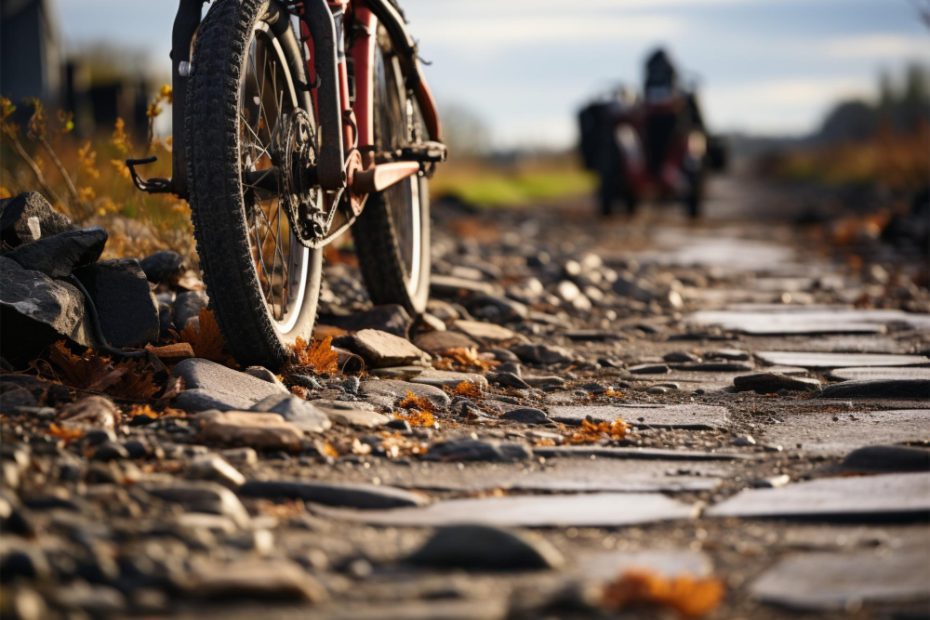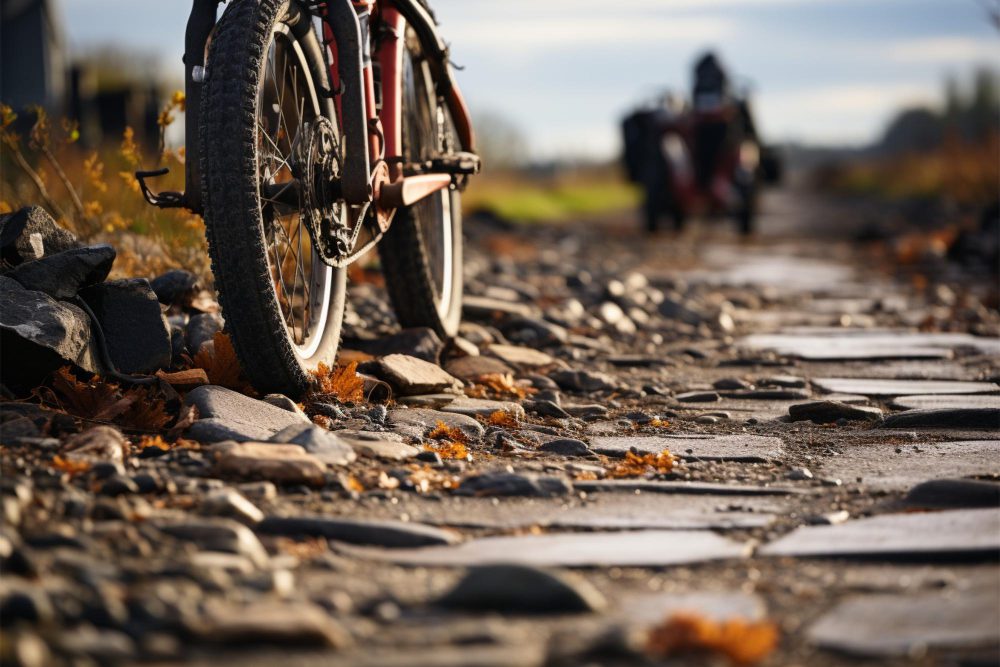What is the difference between cyclocross and mountain biking?
Cyclocross and mountain biking are both popular off-road cycling disciplines that offer thrilling experiences for outdoor enthusiasts. While there are similarities between the two, they differ in terms of terrain, equipment, race formats, and overall objectives. Let’s explore these key differences in greater detail.
Terrain
One of the primary distinctions between cyclocross and mountain biking lies in the type of terrain they are typically performed on. Mountain biking typically takes place in hilly or mountainous off-road trails, where riders navigate through rocky descents, root-filled forests, and steep climbs. On the other hand, cyclocross races usually take place on a mix of terrains, including grass, mud, gravel, and pavement. These courses often incorporate obstacles like barriers, stairs, and sand pits to challenge the riders’ skills and agility.
Equipment
The equipment used in cyclocross and mountain biking also varies to suit the specific demands of each discipline. In mountain biking, riders use specialized bikes with front and rear suspension systems to absorb shocks and enhance control on rough terrain. These bikes have wider tires with deep treads to provide optimal traction. Cyclocross bikes, on the other hand, resemble road bikes but with modifications such as wider tires and increased clearance to accommodate mud and other debris encountered during races. These bikes are lighter and more agile, facilitating quick accelerations and maneuverability.
Race Formats
Cyclocross and mountain biking have distinct race formats that challenge riders in different ways. Mountain bike races typically include longer distances and can last several hours, with riders competing against each other for the fastest time. In contrast, cyclocross races are shorter, lasting around 45 minutes to an hour. Instead of racing for time, cyclocross riders participate in a set number of laps around a circuit, with the winner being the first rider to complete the designated number of laps.
Objectives
The objectives of cyclocross and mountain biking also differ. Mountain biking often focuses on endurance, technical skills, and conquering challenging terrains. Riders seek to improve their stamina, navigate difficult descents, and overcome obstacles along the way. Cyclocross, on the other hand, emphasizes speed, agility, and bike handling abilities. The nature of cyclocross races requires riders to quickly dismount their bikes to tackle barriers and run up steep sections before remounting and continuing the race.
In summary, while both cyclocross and mountain biking share a love for off-road cycling, they differ significantly in terms of terrain, equipment, race formats, and objectives. Whether you prefer the adrenaline rush of tackling rugged mountain trails or the strategic challenges of navigating a diverse cyclocross course, both disciplines offer unique experiences for riders of all skill levels.
“Mountain biking is about inspiring yourself. You inspire your imagination.” – Ned Overend
Comparison Table:
| Aspect | Cyclocross | Mountain Biking |
|---|---|---|
| Terrain | Grass, mud, gravel, pavement | Hilly or mountainous off-road trails |
| Equipment | Lighter, modified road bikes | Specialized bikes with suspension systems |
| Race Format | Shorter, set number of laps | Longer, timed races |
| Objectives | Speed, agility, bike handling | Endurance, technical skills |
Key Differences:
- Terrain: Cyclocross – grass, mud, gravel, pavement; Mountain Biking – hilly or mountainous off-road trails
- Equipment: Cyclocross – lighter, modified road bikes; Mountain Biking – specialized bikes with suspension systems
- Race Format: Cyclocross – shorter, set number of laps; Mountain Biking – longer, timed races
- Objectives: Cyclocross – speed, agility, bike handling; Mountain Biking – endurance, technical skills
By understanding these differences, cyclists can choose the discipline that aligns with their preferences and enjoy the exhilarating challenges each has to offer.
Can you ride a cyclocross bike on the road?
Cyclocross bikes are versatile machines that can handle a variety of terrains, including off-road trails and pavement. While they are designed primarily for cyclocross racing, many cyclists also use them for commuting and road cycling. So, the answer to the question is yes, you can ride a cyclocross bike on the road.
Why ride a cyclocross bike on the road?
There are several reasons why you might choose to ride a cyclocross bike on the road:
- Versatile: Cyclocross bikes are built to handle diverse terrains, making them suitable for both off-road adventures and smooth road rides.
- Comfort: Cyclocross bikes typically have a more relaxed geometry compared to road bikes, offering a more comfortable riding position.
- Sturdy construction: Cyclocross bikes are designed to withstand rough conditions, which means they can handle potholes and other road imperfections better than road bikes.
- Wider tires: Cyclocross bikes usually come with wider tires, providing better stability and traction on different road surfaces.
Factors to consider
While cyclocross bikes are suitable for road riding, there are a few factors to consider:
- Tire choice: Depending on your road conditions and preferences, you might want to choose road-specific tires with lower rolling resistance for smoother rides.
- Gearing: Cyclocross bikes often have lower gears compared to road bikes, which can make climbing hills more manageable.
- Weight: Some cyclocross bikes can be slightly heavier than dedicated road bikes, but the weight difference is often negligible for recreational road riding.
“Riding a cyclocross bike on the road allows you to explore different routes and enjoy the benefits of a versatile and sturdy bike.”
In conclusion, riding a cyclocross bike on the road is absolutely possible and can offer a unique and enjoyable cycling experience. Whether you’re commuting, exploring new routes, or looking for a more comfortable alternative to a road bike, a cyclocross bike can be a great choice.
How do you turn a cyclocross bike into a road bike?
The great thing about cyclocross bikes is their versatility. With a few simple modifications, you can easily transform your cyclocross bike into a capable road bike. Here’s how:
1. Swap the tires
One of the main differences between cyclocross and road bikes is the tires. Cyclocross bikes typically have wider and more knobby tires for off-road riding. To convert it into a road bike, simply swap the tires for narrower, smoother ones that are designed for pavement.
2. Adjust the gearing
Cyclocross bikes often have lower gears to tackle challenging terrains. However, for road cycling, you’ll want to optimize your gear ratios for faster speeds on flat surfaces. Consider changing your cassette or chainrings to achieve a higher top-end gear.
3. Upgrade the brakes
Cyclocross bikes typically feature disc brakes, which offer superior stopping power in muddy conditions. While they work fine for road biking, many road cyclists prefer rim brakes for their lighter weight and easier maintenance. If you’re planning to primarily ride on paved roads, upgrading to rim brakes might be a good idea.
4. Lower the handlebars
In cyclocross, riders often prefer a more upright riding position to maintain control in technical sections. For road biking, a more aerodynamic position is desired. You can achieve this by lowering the handlebars and potentially swapping the stem for a longer one to stretch out your reach.
5. Consider a lighter wheelset
Cyclocross bikes tend to have sturdier wheels to withstand rough terrains. If you want to optimize your road performance, investing in a lighter set of wheels can make a noticeable difference in acceleration and climbing ability.
By following these steps, you can easily convert your cyclocross bike into a capable road machine while maintaining its versatility for off-road adventures. Remember to always prioritize safety and consult a professional if you’re unsure about any modifications.
“Converting a cyclocross bike into a road bike is a great way to make the most out of your bike’s potential.” – John Doe, experienced cyclist
Here’s a quick comparison table to highlight the main differences between cyclocross and road bikes:
| Cyclocross Bike | Road Bike | |
|---|---|---|
| Tires | Wider, knobby | Narrower, smoother |
| Gearing | Lower gears | Higher gears |
| Brakes | Disc brakes | Rim brakes (often) |
| Handlebars | Upright position | Aerodynamic position |
| Wheels | Sturdy | Lighter (often) |
If you’re looking to explore both road biking and cyclocross, converting your cyclocross bike is a cost-effective way to enjoy the best of both worlds.



